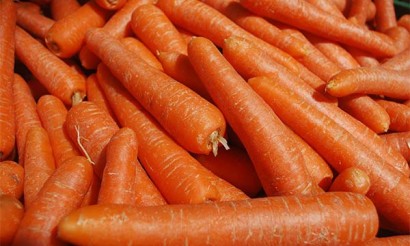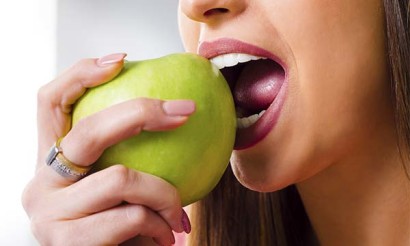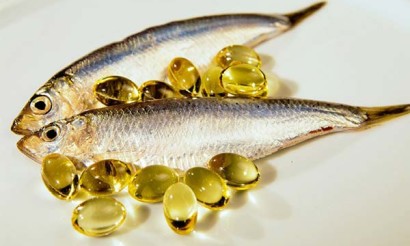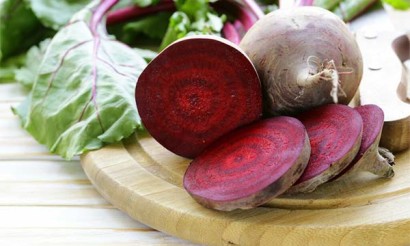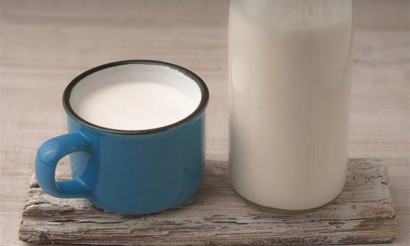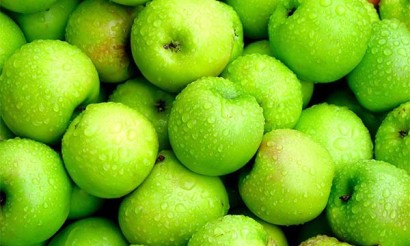Millet porridge when breastfeeding: benefits and harms
Millet is a cereal from which the familiar to many from childhood porridge is prepared. Grandmothers and mothers said that it adds strength and is very useful for the body. And it is true. Despite the small grain size, groats contain a huge amount of useful substances. Millet porridge is not only useful for health, but also helps women to maintain the natural beauty.
- Can I Eat Foam Porridge When Breastfeeding
- In the first month
- The second month
- How to Eat Millet Porridge Properly
- How much you can eat per day.
- Can I eat it at night and on an empty stomach?
- The benefits of millet porridge during breastfeeding
- What are the dangers of millet porridge during lactation?
- What is the right way to include millet porridge into a nursing mother's diet?
- How to choose high-quality millet
- Recipes of millet porridge
- In water
- For side dish
Can I eat millet porridge while breastfeeding?
After the birth of a child, many women are interested in the question of their diet, in particular whether it is possible to eat millet porridge while breastfeeding a baby. The newborn's health fully depends on what the mother eats. That's why this question is very important for women.

According to experts, millet porridge not only can be consumed during lactation, but is also necessary during this period. This is due to the fact that groats contain all the vitamins and minerals necessary for baby and mom.
Millet porridge contains calcium and magnesium, which are needed to strengthen bones and heart muscle. Millet also contains iron, a deficiency of which is often observed in women who have given birth.
After childbirth, young mothers suffer brittle nails, hair loss, dry skin. Other problems also arise, which affects the appearance and overall condition. To cope with them and return their beauty and health will help it is millet porridge.
In the first month
Immediately after birth, the child's digestive system is quite weak and is not able to digest various complex compounds. Therefore, mothers need to follow a strict diet, so as not to harm the newborn. Will have to give up a lot of products. But this does not apply to millet porridge.
According to leading pediatricians, millet is not difficult for the stomach, is easily digested and does not cause allergies. Millet porridge can be eaten by women after childbirth from the first days. It is important that the dish was cooked only from high-quality cereals and in water. Milk in the first stages of life is not used.
In the second month
In the second month after childbirth, millet porridge will also be useful. It will not cause an allergic reaction, will not cause digestive disorders in the newborn. In addition, cereal contains trace elements and vitamins that are necessary for the baby at this time of life.
Mom can eat porridge for breakfast. The dish will help to lift the mood, restore strength and recharge energy for a long time.
In the second month, experts do not recommend using milk in the preparation of porridge. It is still hard for the baby and can cause colic, flatulence.
How to consume millet porridge correctly
Despite the fact that millet porridge is the safest product during the breastfeeding period, a mother should follow a number of rules when drinking it. This will help to reduce the risk of possible consequences.
Experts advise:
- For the first time, a portion of porridge should not exceed 50 g. After that, it is important to monitor the child's condition for two days. The dish in exceptional cases causes an allergic reaction, but in the cereal contains wheat protein. It is he who can cause allergies. If the child has a rash, redness, abdominal pain, colic, increased gas and other unpleasant symptoms, the introduction of the product is recommended to postpone for a month.
- During the first two months, the amount of porridge should be minimal. Then the rate gradually increased.
- Cow's milk is not used in the preparation of millet porridge in the first months of the baby's life. This is because it can cause severe allergies in a baby. When the baby is 3 months old, you can gradually replace the water in which the porridge is prepared with milk.
- Fruits and berries are added to the porridge gradually in small amounts. Do not add two or more new products at once. If allergies occur in this case it will be difficult to understand what caused them.
- Sugar, salt and butter should be added to porridge in minimal amounts. It is better to give up these products at the first stages, if possible.
- If you have an ulcer, gastritis or during the exacerbation of other diseases of the digestive tract, you should not eat millet porridge.
- Buy only high-quality groats, which have a fairly long shelf life.
- Before buying the package should be checked for integrity.
- Before cooking the cereal should be thoroughly rinsed.
- For porridge to be tasty, it is better to give preference to grains that have a bright yellow color. It indicates the quality and freshness of the product. It is important to know that when using light millet, the porridge turns out liquid. To obtain a crumbly dish, you need to buy a darker color of cereal.
How much you can eat per day
Millet porridge when breastfeeding will bring invaluable benefits for the body of the mother and child. But to eat it in large quantities is harmful.
The daily norm at the first stages is only 50 g. In this case, you should not add milk, butter or sugar to the porridge. Gradually the norm increases to 200 g per day. It will also be possible to add fruits or berries, sugar and butter, but in small amounts.
You can eat millet porridge no more than 3 times a week. Such a norm will help to avoid unpleasant consequences for the baby and maintain the health of the mother.
You can eat at night and on an empty stomach
Experts do not recommend consuming millet porridge before going to bed. This is due to the fact that the cereal contains a large amount of carbohydrates, which will lead to gaining extra weight. Dinner for a nursing mother should be light and consist of products that do not have a negative impact on the digestive system. This kind of food eliminates the occurrence of colic in the baby, and he will sleep more peacefully.
Millet porridge in the morning on an empty stomach can and should be eaten by moms while breastfeeding. Such a breakfast is quite light, but it allows you to charge the body with the necessary energy, to satisfy the hunger for a long time. In addition, the millet porridge is quickly cooked.
The benefits of millet porridge when breastfeeding
Millet porridge is a treasure trove of vitamins and minerals. It has a beneficial effect on the body and is useful for lactation. The valuable properties of the product include:
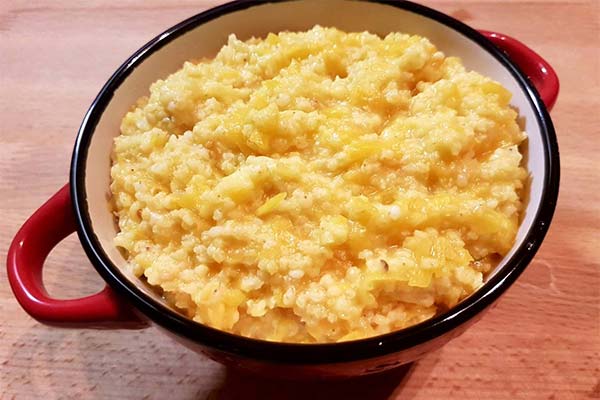
- Strengthening the body. Cereals contain antioxidants that remove harmful substances. Thus, it strengthens the immune system, and the body better resists bacteria and viruses. This is very important for a nursing mother, because the development of colds increases the risk of infecting the newborn as well. In addition, millet porridge helps to reduce the likelihood of cancer.
- Normalization of blood circulation. The composition of millet includes magnesium. The substance has a positive effect on blood vessels, strengthens the heart muscle and helps to fight stress. When using millet porridge in a nursing mother reduces anxiety, normalizes sleep, and restores heartbeat.
- Restoration of the digestive system. Millet has a slight laxative effect, which helps to normalize peristalsis.
- Maintaining the performance of the kidneys, pancreas and liver due to the number of trace elements and vitamins. It is these organs that suffer during pregnancy and childbirth.
- Cleansing of toxins. Thanks to this property, the general well-being, the condition of the skin improves.
- Clearing the blood vessels from cholesterol. The substance accumulates on the walls, forming plaques. They impair blood circulation and can lead to a heart attack.
- Regulation of blood glucose levels. Millet porridge is recommended for people with diabetes.
- Restoration of vital forces. After the birth of a child, the mother just needs a lot of strength. Millet porridge will help to recharge the body with energy. It is quite caloric and includes many useful substances.
- Strengthening of hair and nails. Cereals contain selenium, zinc and antioxidants. Micronutrients are the basis of a woman's beauty. They help to restore damaged hair, nails. It is thanks to them, the skin acquires a natural color, becomes velvety.
- Elimination of swelling of soft tissues due to diuretic effect. Millet also helps to support and normalize the kidneys, the urinary system.
- Strengthening of tooth enamel and prevention of dental caries. Millet porridge contains calcium, which is the building material of bone tissue. As is known, after childbirth and while breastfeeding the female body lacks this microelement, which results in the destruction of teeth. That is why it is important to eat millet porridge during lactation.
- Prevention of constipation. After childbirth, women often suffer from such a problem. To get rid of it will help the introduction to the diet of millet porridge. In the composition of the grains there are dietary fiber, which has a beneficial effect on the digestive system.
- The elimination of anemia. During pregnancy and after childbirth, women have a lack of iron in the body. Such a condition is accompanied by unpleasant signs in the form of constant fatigue, malaise, and headaches. Millet porridge contains a sufficient amount of iron, which helps to restore the process of hematopoiesis and get rid of anemia.
- Strengthening of vascular walls. This property of millet porridge is due to the presence of copper in its composition. The sufficient content of the microelement allows us to prevent internal bleeding.
- Besides, it is recommended to eat millet porridge regularly for people living in regions with unfavorable ecological situation. Millet helps to remove from the body toxins and other harmful substances. That is why porridge is so useful and during the breastfeeding period, as all harmful substances can penetrate into the breast milk.
- Millet porridge is also suitable in cases where a person leads an inactive lifestyle and is prone to gaining excess weight. After the birth of a child, many women suffer from a similar problem. To gain extra pounds will not allow regular consumption of millet porridge.
- Cereals are also known for their ability to prevent the development of inflammatory processes by eliminating putrefactive formations. In the composition of the grains there are also substances that improve the work of the brain, supporting the function of the visual apparatus. This is necessary for women after the birth of a child.
Thus, millet porridge will be an excellent addition to the main menu of a nursing mother. It does not cause allergies in the child and helps a woman to recover her body faster.
Contraindications
As any product, millet porridge can be eaten not always. In some cases, it will not only be of no benefit, but also will cause serious disorders. The use of millet porridge should be limited or completely excluded in the presence of such conditions:
- A tendency to increased gas. Cereal contains fiber, which will only make the condition worse.
- Hypothyroidism. The disease occurs against a background of insufficiency of certain hormones that are produced by the thyroid gland. According to studies, it has been established that millet porridge helps to slow the absorption of iodine. This substance is a basic element for the endocrine system. After childbirth, women should visit an endocrinologist, because the process of pregnancy affects the work of the thyroid gland.
- Decreased acidity of the stomach. Consumption of porridge contributes to the deterioration of the situation and the development of certain abnormalities in the digestive system.
- Inflammation affecting the large intestine.
- Individual intolerance. In exceptional cases, an allergy to wheat protein is observed. It is expressed in the appearance of redness of the skin, rash, itching and other unpleasant signs.
Before a breastfeeding mother introduces millet porridge into her diet, you should make sure there are no such contraindications. It is best to consult a pediatrician. This will help to reduce the risk of unpleasant consequences.
What are the dangers of millet porridge during lactation?
Not always millet porridge can be beneficial for the body. In some cases, the product can cause serious disorders in the body of the mother and child.
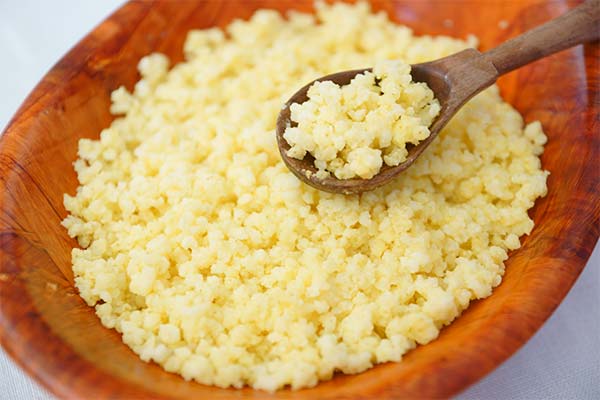
First of all, when consuming millet porridge, a woman may experience an exacerbation of inflammatory diseases of the large intestine. If they are present, it is prohibited to eat the dish.
It is not recommended to eat porridge from millet groats in cases where hypothyroidism is established, as it leads to a worsening of the course of the disease. In this case, there are such unpleasant symptoms as hair loss, splitting of the nail plate, deterioration of general well-being and constant malaise.
Millet porridge also has a negative effect on the child. A newborn baby can have allergies even though millet is a low-allergenic food.
The dish is allowed to mothers from the first days of life, but it should be introduced carefully, starting with a small portion. At the same time, it is important to monitor the reaction of the child. In order to avoid the occurrence of undesirable symptoms at first, it is important to give up cow's milk as part of the porridge. The dish should be boiled in water.
If signs such as rash, redness of the skin or mucous membranes appear, it is necessary to exclude the porridge from your menu. You can try millet again after 1-2 months.
A baby under six months of age also has colic. They occur as a result of the fact that the digestive system is not yet able to properly and quickly digest certain foods. This condition is normal for babies. But discomfort in the abdominal area often bothers children, as a result of which they do not sleep well and are naughty. When colic occurs, it is necessary to reduce the portion of porridge or for a couple of weeks to give up the product completely. This will help to relieve the baby from unpleasant feelings.
How to properly introduce millet porridge into the diet of a nursing mother
To make the period of introducing new products into the diet of a nursing mother easier and safer for the baby, it is important to follow a number of recommendations.
- Millet porridge can be introduced from the first days of life of the child.
- For the first 3-4 months, the porridge should be boiled only with water. This will avoid colic and allergic reactions to cow protein.
- Milk is added to porridge gradually from 4 months after birth. After a while it should completely replace water.
- No sugar, butter or other ingredients are added to the porridge for the first 3 months. Then each ingredient is introduced gradually, starting with a small amount.
- The first portion of porridge should not exceed 50 grams. After that, the baby's reaction should be monitored for two days. Stop introducing millet porridge if the newborn has symptoms of allergy. If they are absent, the introduction of the product can be continued.
- The rate increases gradually. The mother can eat up to 200 g of porridge per day. At the same time, the weekly norm is about 600 g.
Compliance with all the recommendations when introducing millet porridge to the diet of a nursing mother will help reduce the risk of colic and allergic reactions in the baby.
How to choose high-quality millet
A woman during the breastfeeding period should eat only high-quality products. That is why it is important to know how to identify good millet. Today in the market you can find three varieties of groats:
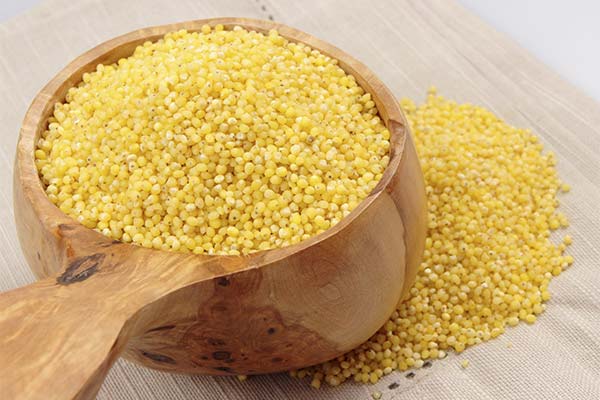
- Ground. Is the most suitable option for breastfeeding mothers. Each grain is cleaned, during which the germ and shell are removed. As a result, the millet is better digested.
- Dranetz. This variety is popular because it contains more useful substances. Cereal in the process of processing is only cleaned of the film, is more difficult for the body to digest and can cause increased gas formation.
- Crushed. These are peeled and crushed grains of cereal. Used to prepare porridge, the consistency of which is semi-liquid. Suitable for meals for the elderly and children.
All varieties of millet can be used to prepare porridge when the baby is fed on mother's milk. But it is important to remember that dunnets have a bitter taste even after soaking.
In order to choose a high quality cereal, it is important to pay attention to such characteristics:
- Packaging. On it there should be no damage. It is better to give preference to a product in a transparent bag. There does not penetrate moisture and foreign odors. You should not buy goods in cardboard packaging.
- Grain. Cereal of high quality has a glossy glow, bright yellow color. Cereal with a whitish color indicates that it was harvested and packed quite a long time ago. It is not worth buying it. For a nursing mother, you should not choose and brown colored grains. They are heavy for the baby's digestive tract.
- Shelf life. The less time has passed since packaging, the better the groats. Buy the goods in advance is not worth it.
- The absence of impurities. It is recommended to choose a transparent package, through which you can assess the absence of impurities, dust and dirt. Millet must be clean with no extraneous inclusions.
- Smell. Foreign odors should be completely absent.
After purchase, the groats should be poured into a glass container with a tightly closed lid for storage. It is left in a dark place, where moisture and sunlight do not reach.
The composition of millet includes millet fat. It is this that gives bitterness when stored for a long time or improperly. To get rid of it, the groats should be left for half an hour in warm water before cooking. Thus, the fat will dissolve, and the porridge will not be bitter.
Millet porridge recipes
Before cooking the porridge, the grits are processed to get rid of the bitterness. This can be done in two ways:
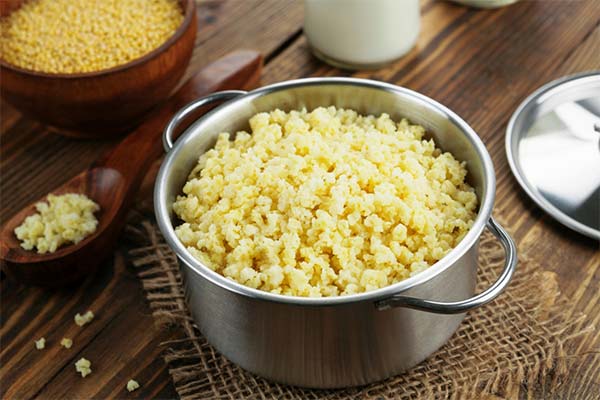
- Pour the millet with water and put the container on the stove. Bring everything to a boil, drain the water, and rinse and boil the millet.
- Pour water over the grains and leave overnight. In the morning, drain the liquid, and rinse the groats.
After the grits are prepared, you can proceed to cooking. There are several different recipes for millet porridge. For a nursing mother, the following will be suitable:
On water
It takes 1.5 cups of water and 0.5 cup of millet. To taste, you can add a small amount of sugar, salt and butter. After the groats are rinsed, pour it with boiling water and drain the liquid after a couple of minutes. Add grains to the prepared water, salt, put on low heat and cover the container with a lid. Cook for 15 minutes. Then you can add sugar and butter and leave the porridge under the lid for a few more minutes.
For a side dish
Millet porridge can also be used as a side dish. To prepare it, you will need an onion, a bell pepper, a glass of millet, 1.5 cups of water, and salt to taste. Rinse millet and pour it into slightly salted water. Cook for 10 minutes on low heat, stirring constantly. Cover the container at the end of cooking, and leave on low heat for another 10 minutes. Chop the onions and peppers finely, fry in a little vegetable oil and add to the porridge. Mix everything and serve. You can decorate with greens.
In the porridge with water over time you can add milk, and then fruits, berries. They help to give a familiar dish a new taste.
Millet porridge is a source of vitamins and minerals that the body needs. It is allowed for mothers to eat from the first days of life of the newborn, as it belongs to the low-allergenic products. Negative reactions in children are observed in rare cases. But even in spite of this, to introduce it to the diet of a woman should be careful, carefully monitoring the well-being of the child.
Millet porridge is useful to eat for breakfast, but it can be a wonderful side dish for lunch. It is important for breastfeeding mothers to comply with all permitted norms and not to eat groats in large quantities, as this can lead to the emergence of colic in the baby.
«Important: All information on this site is provided for informational purposes only purposes only. Before applying any recommendations, consult a specialist specialist. Neither the editors nor the authors are liable for any possible harm caused by materials."



